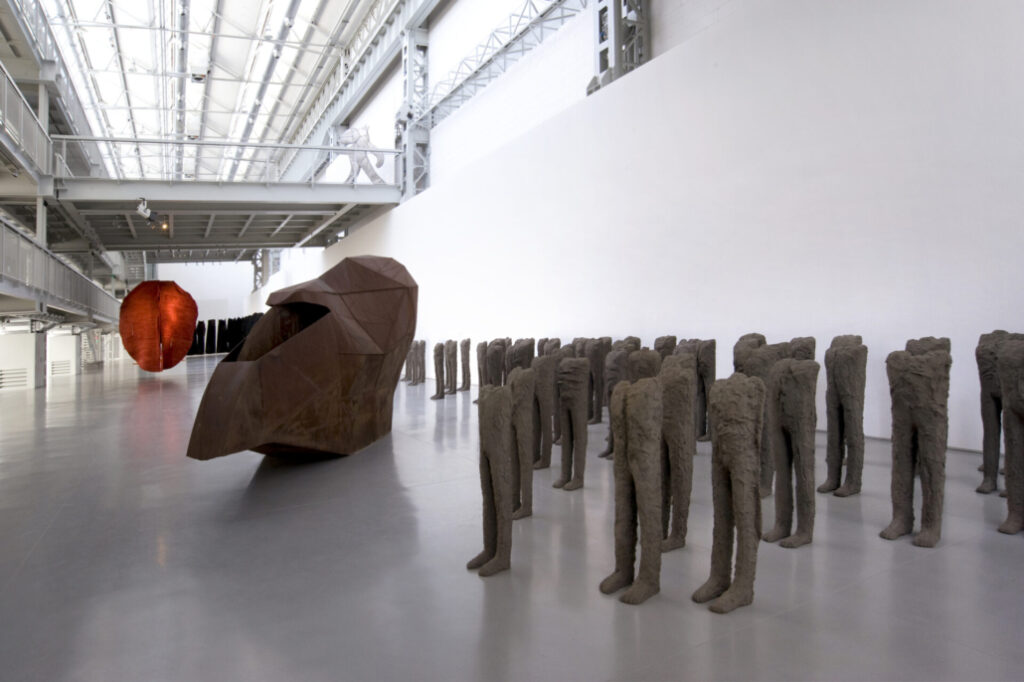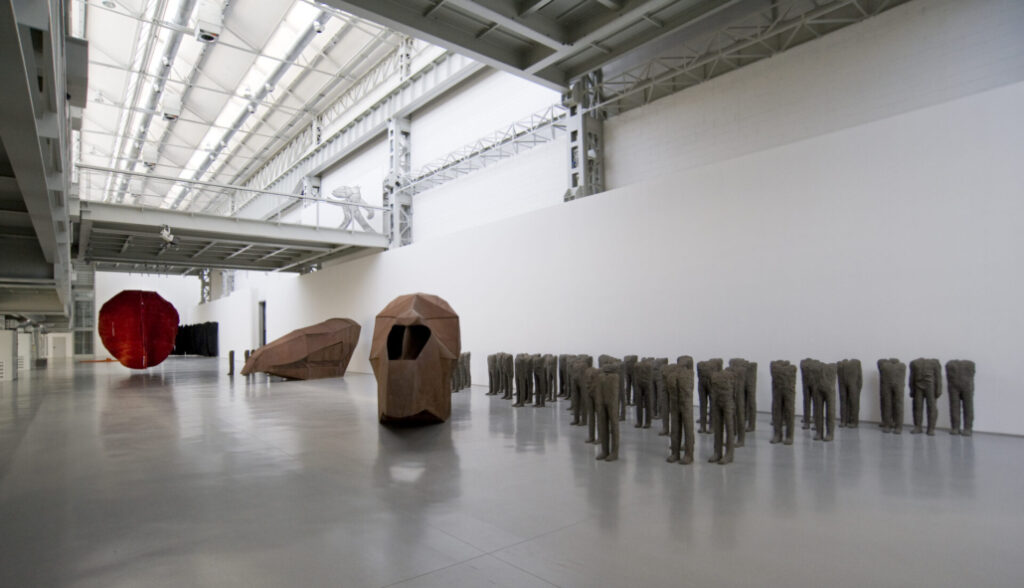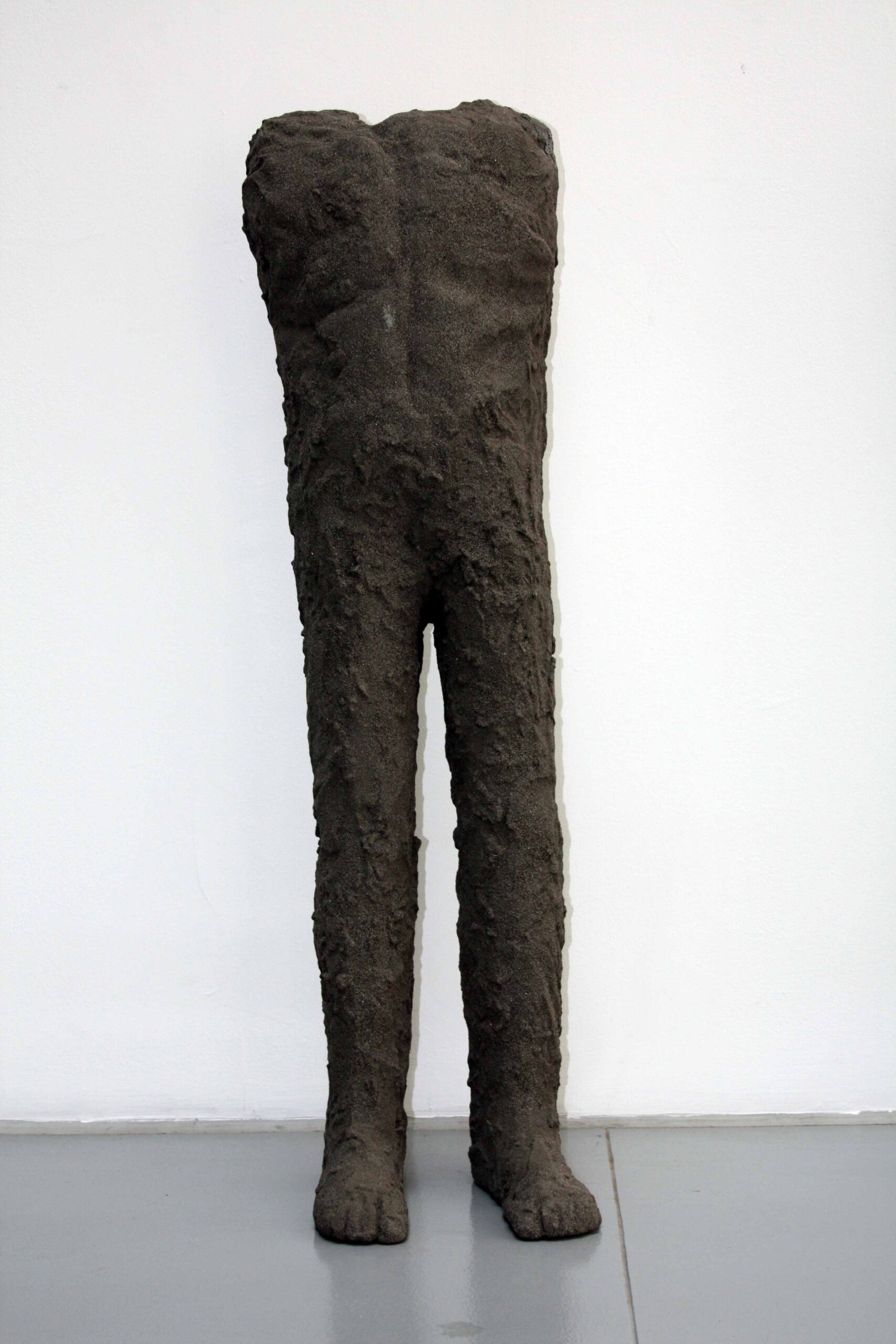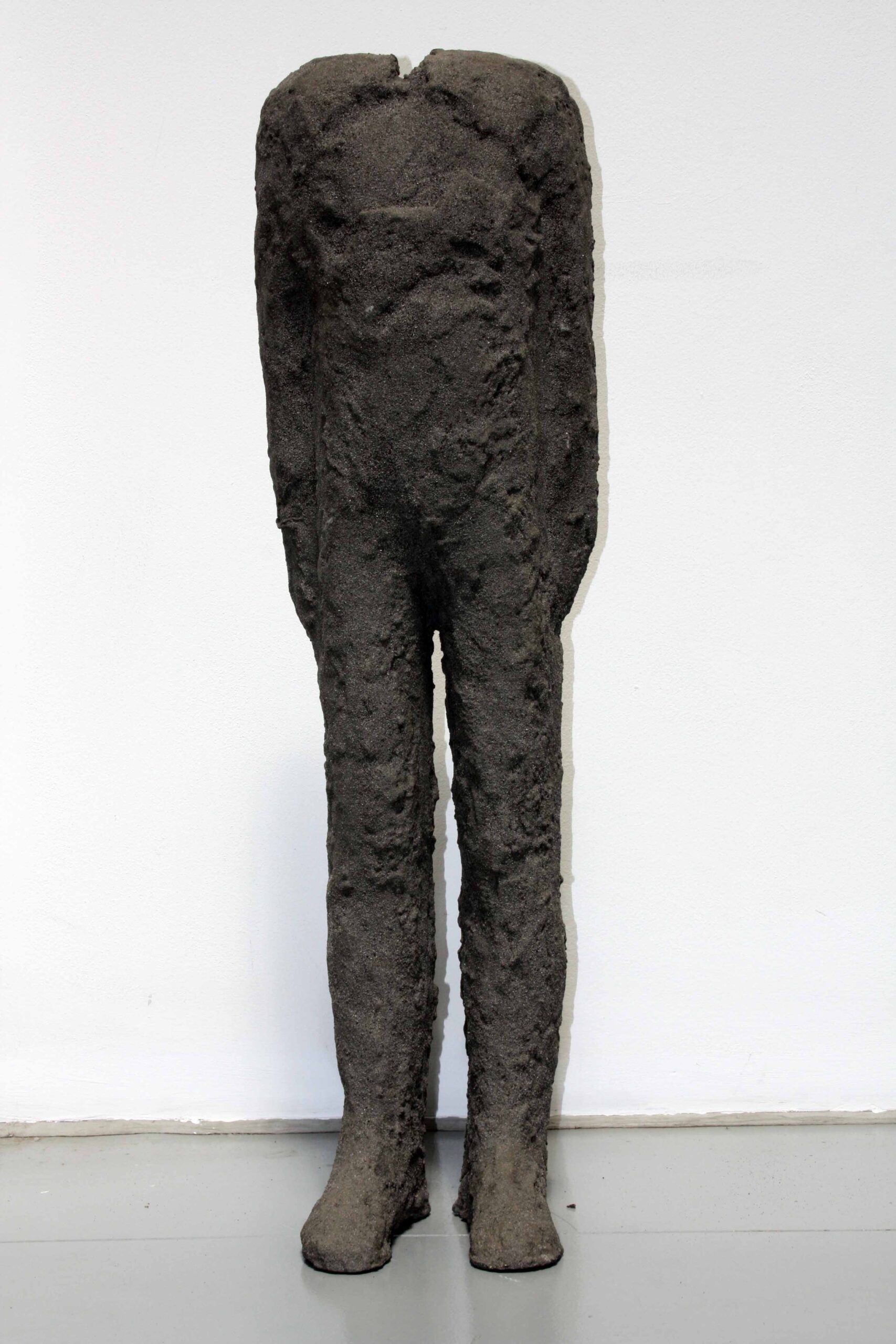![I Bambini donati da Magdalena Abakanowicz alla Fondazione appartengono a una serie di suoi lavori nei quali l’artista dà forma a figure vagamente umane e decisamente inquiete. I prodromi di queste immagini corrono indietro verso una Polonia presocialista e coinvolta nei fatti di sangue della seconda guerra mondiale. La Rivoluzione importata dai bolscevichi fu soprattutto, infatti, una conseguenza di quel conflitto che Hitler volle far nascere proprio con una prima aggressione al corridoio di Danzica. Si narrava a quel tempo che il dittatore avesse voluto fare arrivare dalla Polonia in Germania un camion di ragazzi dal viso ariano, orfani o pretesi tali, giovani rapiti alla loro terra per diventare dei perfetti tedeschi. Ma la brutalità della vita e delle circostanze volle che nella notte di gelo che si interpose durante il viaggio quegli splendidi esemplari umani si gelassero. La mattina seguente, aperto il camion, ne uscirono i corpi rigidi cadendo uno sull’altro come birilli. Questa scena, anche se solamente immaginata sulla scorta del racconto di altri, divenne un seme per le colonie di Ragazzi, Bambini, Puellae (in italiano e latino nei titoli) e in generale per i plotoni di individui inermi, rosi dalle intemperie, realizzati inizialmente in fibra naturale e poi in molte altre materie, che hanno una parte essenziale nella scultura di Abakanowicz. Li vediamo come eserciti di stracci o come morti viventi, come esseri non più integri – spesso il loro corpo non ha testa o manca di qualche parte periferica. […] Nella serie di sculture di Magdalena, le figure seriali non rappresentano degli ebrei che vanno verso le camere a gas né soldati di ritorno dalla sconfitta, non sono narrazioni di un episodio ma raccontano il patimento di ogni guerra e di ciascuna situazione in cui sussistano aspetto dell’imposizione e della violenza sui deboli. Sono masse o piuttosto grappoli di individui che ricordano ogni possibile olocausto, dalla shoah degli ebrei agli internati del comunismo fino ai forzati delle guerre di religione. Sono anche persone sole, in fuga, prive di qualsiasi cosa che non sia la materia che li compone. da: Magdalena Abakanowicz. Space to Experience, catalogo della mostra, a cura di A. Vettese, Milano, Fondazione Arnaldo Pomodoro, 2009, pp. 39-40](https://www.fondazionearnaldopomodoro.it/wp-content/uploads/2023/09/Abakanowicz-Bambini-1998-2007.jpg)
Magdalena Abakanowicz
Bambini, 1998-2007
ceramic, 38 × 109 × 25 cm each one (7 figures)
The Bambini donated by Magdalena Abakanowicz to the Foundation – at the end of her solo exhibition in 2009 – belong to a series of her works in which the artist gives shape to "“vaguely human and decidedly uneasy figures. The harbinger of these images can be traced back to a pre-socialist Poland caught up in the bloody events of the Second World War. The revolution imported by the Bolsheviks was above all, in fact, a consequence of the conflict that Hitler unleashed with a first attack on the Danzig Corridor. It was said at the time that the dictator had wanted to bring a carriage filled with boys and girls with Aryan features from Poland to Germany: orphans, or alleged to be, these young people were abducted from their homeland to be turned into perfect Germans. But as the brutality of life and the circumstances would have it, those splendid human specimens froze to death during the icy night on which they made their journey. The next morning, when the doors of the carriage were opened, their stiff bodies tumbled out like ninepins. This scene, even if only imagined on the basis of someone else’s account, became a seed for the colonies of Ragazzi, Bambini, Puellae (the titles are in Italian and Latin) and for the platoons of helpless, weather-beaten individuals in general, initially made out of natural fibre and then many other materials, that play an essential part in Magdalena Abakanowicz’s sculpture. We see them as armies of rags or as living dead, as beings that are no longer intact — their bodies often no longer have heads or lack some other peripheral part. [...] In the series of Magdalena’s sculptures, figures do not represent Jews on their way to the gas chamber nor soldiers returning from defeat. They are not narrations of a particular story but recount the suffering of every war and every situation in which oppression and violence is inflicted on the weak. They are masses or rather clusters of people that commemorate any possible holocaust, from the Shoah of the Jews to the internees of communism and the victims of wars of religion. They are also individuals, in flight, stripped of everything except the material of which they are made".
from: Magdalena Abakanowicz. Space to Experience, exhibition catalogue, edited by A. Vettese, Milano, Fondazione Arnaldo Pomodoro, 2009, pp. 39-40.






